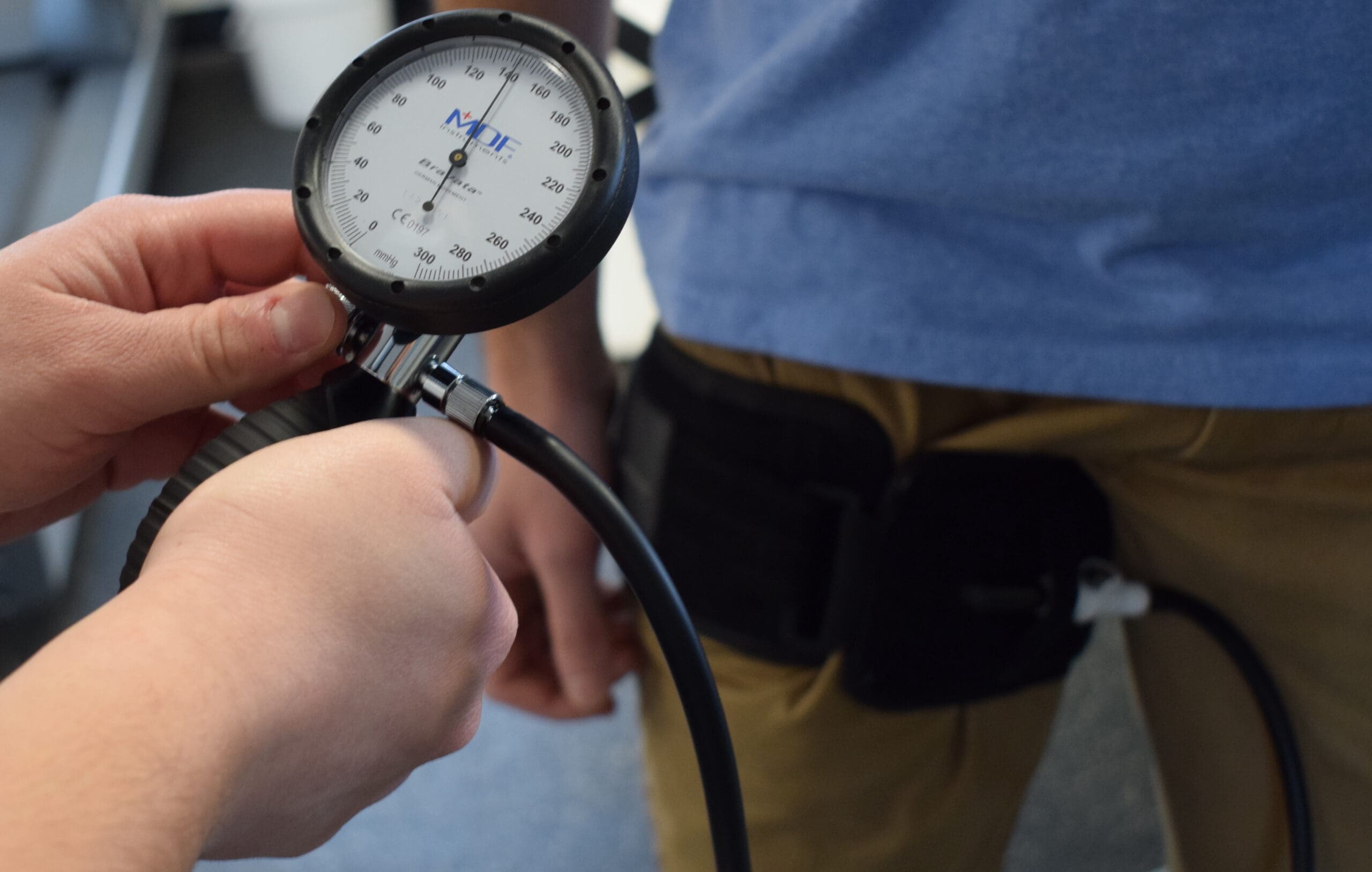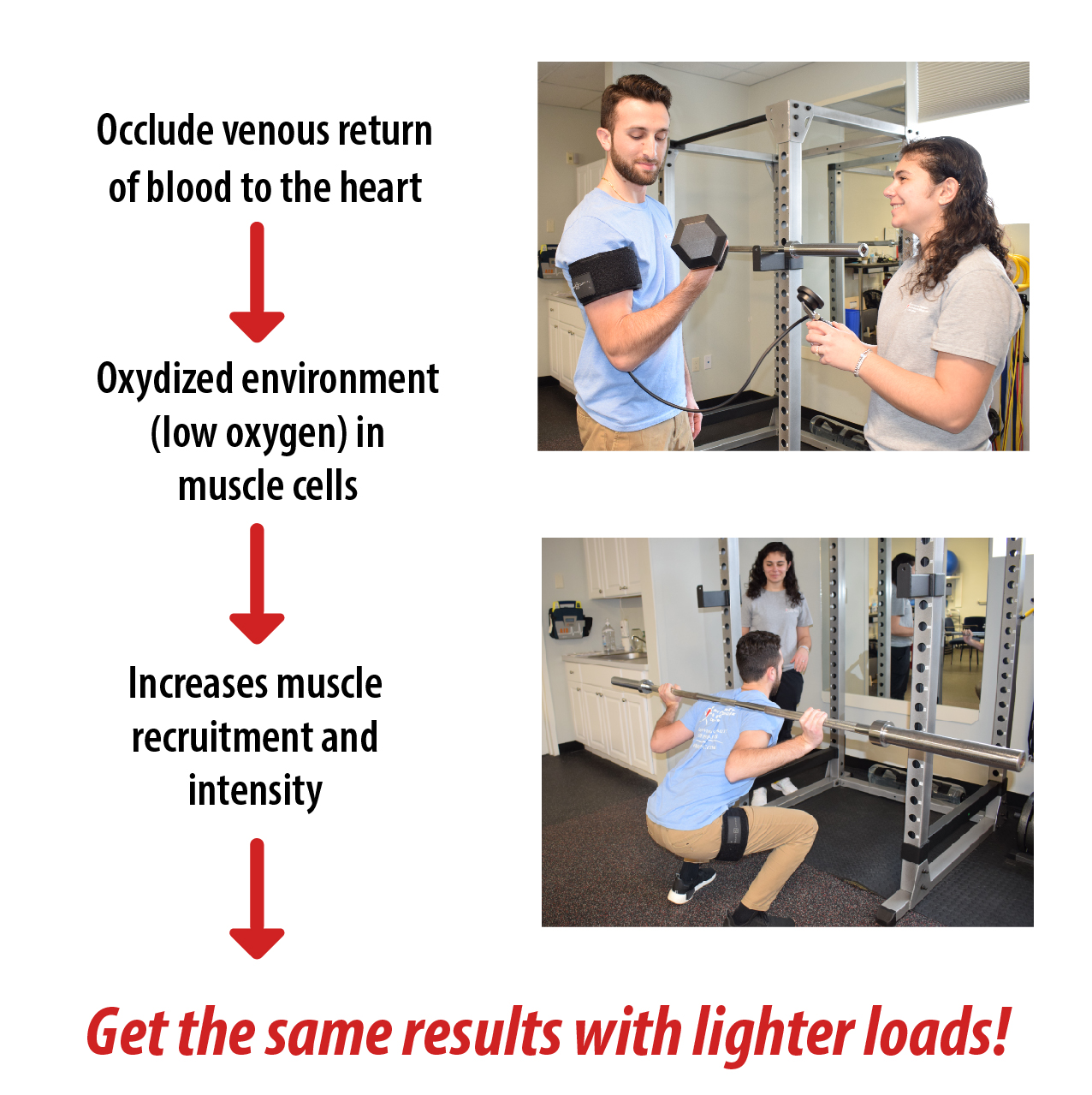Blood Flow Restriction Therapy
Blood Flow Restriction (BFR) Therapy

How BFR Works
Blood-flow restriction training can help patients to make greater strength training gains while lifting lighter loads, thereby reducing the overall stress placed on the limb. The process involves partially restricting bloodflow, which results in a oxidized (low oxygen) environment in the muscles, similar to the environment during a high intensity workout.
Benefits of BFR
- Improved muscular strength
- Increased muscle growth
- Prevention of muscular atrophy
- Development of newer and healthier blood vessels
- Decreased risk of cardiovascular disease
- Improved bone mineral density
More About BFR
Blood flow restriction (BFR) training, also known as occlusion training, can help patients recover from injuries faster and more effectively. This is especially true for those who struggle with lifting weights due to age, severity of injury or other limitations.
The cuffs partially restrict venous blood return, which makes the muscles work harder to pump the blood back to the heart. At the local cellular level, this dam effect produces lower oxygen levels in the muscle cells, acidic muscle cells, and other changes that make the muscles fatigue quickly, creating an environment similar to that of heavy weightlifting or high intensity training.
Due to the perceived lower oxygen levels, the anterior pituitary gland in the brain responds by releasing growth hormone, which helps with muscle cell reproduction, muscle cell regeneration, and lipolysis (fat breakdown). All of this happens while lifting lighter weight to prevent re-injury while promoting muscle growth in the effected limb.
How Blood Flow Restriction (BFR) Works

